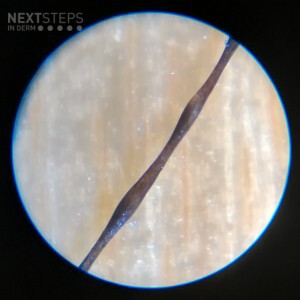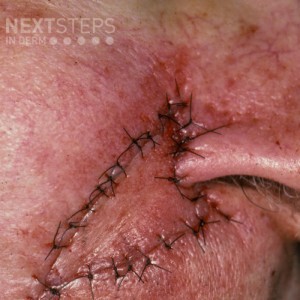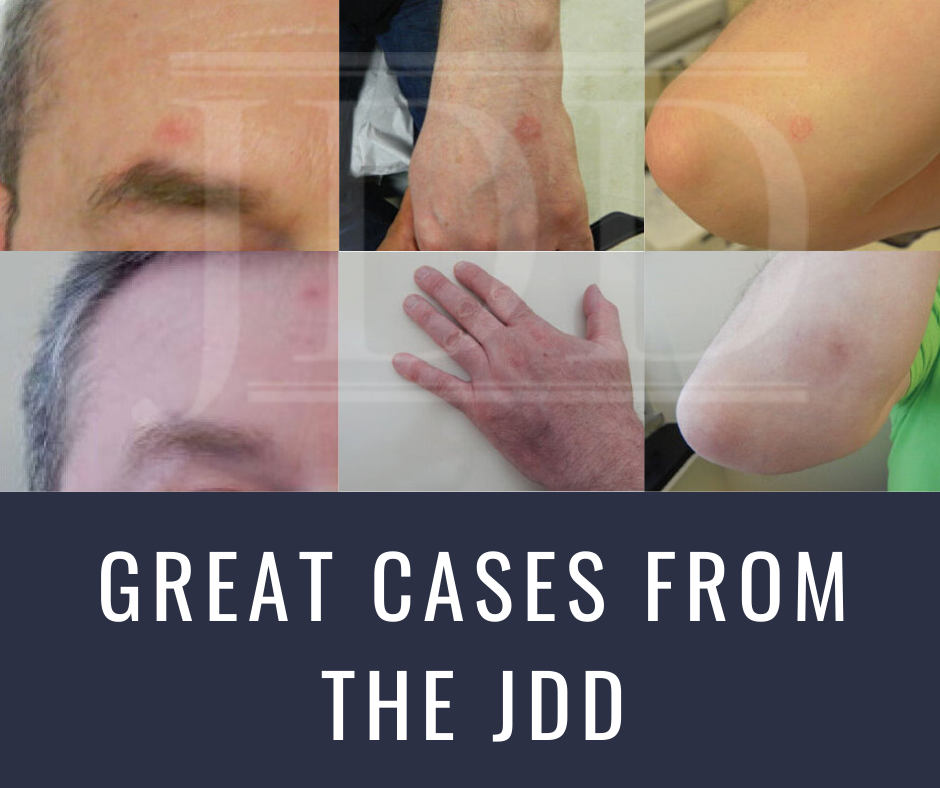Clinical Findings – Friday Pop Quiz 12/6
 What is the most likely diagnosis?
A. Bjornstad syndrome
B. Trichothiodystrophy
C. Uncombable hair syndrome
D. Monilethrix
E. Netherton's syndrome
To find out the correct answer and read the explanation, click here.
Brought to you by our brand partner Derm In-Review. A product of SanovaWorks.
…
What is the most likely diagnosis?
A. Bjornstad syndrome
B. Trichothiodystrophy
C. Uncombable hair syndrome
D. Monilethrix
E. Netherton's syndrome
To find out the correct answer and read the explanation, click here.
Brought to you by our brand partner Derm In-Review. A product of SanovaWorks.
…
 What is the most likely diagnosis?
A. Bjornstad syndrome
B. Trichothiodystrophy
C. Uncombable hair syndrome
D. Monilethrix
E. Netherton's syndrome
To find out the correct answer and read the explanation, click here.
Brought to you by our brand partner Derm In-Review. A product of SanovaWorks.
…
What is the most likely diagnosis?
A. Bjornstad syndrome
B. Trichothiodystrophy
C. Uncombable hair syndrome
D. Monilethrix
E. Netherton's syndrome
To find out the correct answer and read the explanation, click here.
Brought to you by our brand partner Derm In-Review. A product of SanovaWorks.
… 

 Although this may be a big assumption, I would venture to guess that training in the management of keloids has, for many residents, consisted primarily of topical and intralesional therapies—namely steroids and silicone. While steroids and silicone may be a fantastic name for a reality television show about the exciting lives of female bodybuilders, in real life it can be a pretty unimaginative …
Although this may be a big assumption, I would venture to guess that training in the management of keloids has, for many residents, consisted primarily of topical and intralesional therapies—namely steroids and silicone. While steroids and silicone may be a fantastic name for a reality television show about the exciting lives of female bodybuilders, in real life it can be a pretty unimaginative …  The type of repair depicted in the photograph is a:
A. Rhombic flap
B. Nasolabial transposition flap
C. Rotation flap
D. Full-thickness skin graft
E. Island pedicle flap
To find out the correct answer and read the explanation, click here.
Brought to you by our brand partner Derm In-Review. A product of SanovaWorks.
…
The type of repair depicted in the photograph is a:
A. Rhombic flap
B. Nasolabial transposition flap
C. Rotation flap
D. Full-thickness skin graft
E. Island pedicle flap
To find out the correct answer and read the explanation, click here.
Brought to you by our brand partner Derm In-Review. A product of SanovaWorks.
…  Biologics have revolutionized the treatment of psoriasis, and with new entries into the class, PASI90 and 100 have become attainable for many patients. In this installment of our Therapeutic Cheat Sheet series, we’ll cover everything you need to know to start and monitor your patients on IL-17 blocking therapies.
[caption id="attachment_8301" align="alignleft" width="612"] Click image to en …
Biologics have revolutionized the treatment of psoriasis, and with new entries into the class, PASI90 and 100 have become attainable for many patients. In this installment of our Therapeutic Cheat Sheet series, we’ll cover everything you need to know to start and monitor your patients on IL-17 blocking therapies.
[caption id="attachment_8301" align="alignleft" width="612"] Click image to en …  Authors Julie K. Nguyen MD, Silvia Mancebo MD, Brady Bleicher MD, and Jared Jagdeo MD MS present a case report of a patient with localized porokeratosis lesions on the face and extremities. Brought to you by the Journal of Drugs in Dermatology, a product of SanovaWorks.
Introduction
Porokeratosis is a disorder of epidermal keratinization that encompasses multiple clinical variants based on d …
Authors Julie K. Nguyen MD, Silvia Mancebo MD, Brady Bleicher MD, and Jared Jagdeo MD MS present a case report of a patient with localized porokeratosis lesions on the face and extremities. Brought to you by the Journal of Drugs in Dermatology, a product of SanovaWorks.
Introduction
Porokeratosis is a disorder of epidermal keratinization that encompasses multiple clinical variants based on d …